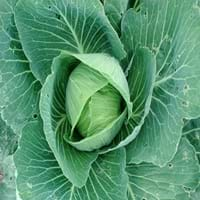Life Span
Perennial
Annual
Origin
Eastern Europe
Europe
Types
Not Available
Chinese Cabbage, Napa Cabbage
Habitat
Terrestrial
Farms, Fields, Subtropical climates
USDA Hardiness Zone
4-9
4-7
Sunset Zone
1a, 1b, 2a, 2b, 3a, 3b, 4, 5, 6, 7, 8, 9, 10, 11, 12, 13, 14, 15, 16, 17, 18, 19, 20, 21, 22, 23, 24
A1, A2, A3, H1, H2, 1a, 1b, 2a, 2b, 3a, 3b, 4, 5, 6, 7, 8, 9, 10, 11, 12, 13, 14, 15, 16, 17, 18, 19, 20, 21, 22, 23, 24
Habit
Clump-Forming
Clump-Forming
Flower Color
Yellow, Lavender, Blue Violet
Yellow
Flower Color Modifier
Bicolor
Bicolor
Fruit Color
Not Available
Not Available
Leaf Color in Spring
Green, Sea Green
Light Green
Leaf Color in Summer
Green, Sea Green
Not Available
Leaf Color in Fall
Green, Sea Green
Not Available
Leaf Color in Winter
Light Green
Not Available
Leaf Shape
Lanceolate
Oblong Circular Round
Plant Season
Spring, Summer
Spring, Summer, Fall, Winter
Sunlight
Full Sun, Partial Sun
Full Sun, Partial Sun
Type of Soil
Loam, Sand
Loam, Sand
The pH of Soil
Neutral
Neutral
Soil Drainage
Well drained
Well drained
Bloom Time
Spring, Late Spring, Early Summer
Spring, Summer
Tolerances
Drought
Drought
Where to Plant?
Ground
Container, Ground
How to Plant?
By dividing rhizomes, tubers, Seedlings
From bulbs, Seedlings
Plant Maintenance
Medium
Low
Watering Requirements
Average Water Needs, Do Not over Water
Keep ground moist, Keep the ground moist but not water-logged, Requires regular watering
In Summer
Lots of watering
Lots of watering
In Spring
Moderate
Moderate
In Winter
Average Water
Average Water
Soil Type
Loam, Sand
Loam, Sand
Soil Drainage Capacity
Well drained
Well drained
Sun Exposure
Full Sun, Partial Sun
Full Sun, Partial Sun
Pruning
Remove damaged leaves, Remove dead branches, Remove dead leaves
Remove damaged leaves, Remove dead leaves
Fertilizers
All-Purpose Liquid Fertilizer
Nitrogen, Phosphate, Well-rotted manure
Pests and Diseases
Red blotch
Alternaria Leaf Spot, Anthracnose, Bacterial soft rot, Blackleg, Damping off, Damping-off, Downy mildew, Flea beetle, Flea Beetles, Fungal Diseases, fungus, Red blotch, Watery soft rot
Plant Tolerance
Drought
Drought, Heat Tolerance
Flower Petal Number
Single
Single
Fragrant Bark/Stem
No
Yes
Foliage Texture
Coarse
Coarse
Foliage Sheen
Matte
Not Available
Attracts
Hummingbirds
Beetles, Flies, Insects
Allergy
Skin irritation
Throat itching
Aesthetic Uses
Showy Purposes
Not Used For Aesthetic Purpose
Beauty Benefits
Not Available
Not Available
Environmental Uses
Air purification
Air purification, Food for animals, Food for insects
Medicinal Uses
No Medicinal Use
Anti-oxidant, Antioxidants, Digestion problems, Low calories, Nutrients, Skin Disorders
Part of Plant Used
Not Available
Fruits, Leaves
Other Uses
Used as Ornamental plant
Food for animals, Used As Food, Used for its medicinal properties, Used as a spice, Used in salads
Used As Indoor Plant
No
No
Used As Outdoor Plant
Yes
Yes
Garden Design
Alpine, Edging, Mixed Border, Rock Garden, Wall
Container, Edible, Herb / Vegetable
Botanical Name
IRIS pumila
BRASSICA rapa( Pekinensis Group)
Common Name
Dwarf Iris
Celery Cabbage, Napa Cabbage
In Hindi
Dwarf Iris
अजवाइन गोभी
In German
Zwergiris
Sellerie Kohl
In French
Dwarf Iris
céleri chou
In Spanish
Enano Iris
apio col
In Greek
νάνος Ίρις
σέλινο Λάχανο
In Portuguese
Dwarf Iris
aipo couve
In Polish
Dwarf Iris
seler Kapusta
In Latin
Iris Dwarf
Brassica apium
Phylum
Magnoliophyta
Magnoliophyta
Class
Liliopsida
Magnoliopsida
Order
Liliales
Brassicales
Family
Iridaceae
Brassicaceae
Clade
Angiosperms, Monocots
Angiosperms
Subfamily
Iridoideae
Not Applicable
Number of Species
Not Available
Not Available
Season and Care of Dwarf Iris and Celery Cabbage
Season and care of Dwarf Iris and Celery Cabbage is important to know. While considering everything about Dwarf Iris and Celery Cabbage Care, growing season is an essential factor. Dwarf Iris season is Spring and Summer and Celery Cabbage season is Spring and Summer. The type of soil for Dwarf Iris is Loam, Sand and for Celery Cabbage is Loam, Sand while the PH of soil for Dwarf Iris is Neutral and for Celery Cabbage is Neutral.
Dwarf Iris and Celery Cabbage Physical Information
Dwarf Iris and Celery Cabbage physical information is very important for comparison. Dwarf Iris height is 10.20 cm and width 15.20 cm whereas Celery Cabbage height is 22.90 cm and width 15.20 cm. The color specification of Dwarf Iris and Celery Cabbage are as follows:
Dwarf Iris flower color: Yellow, Lavender and Blue Violet
Dwarf Iris leaf color: Green and Sea Green
Celery Cabbage flower color: Yellow
- Celery Cabbage leaf color: Light Green
Care of Dwarf Iris and Celery Cabbage
Care of Dwarf Iris and Celery Cabbage include pruning, fertilizers, watering etc. Dwarf Iris pruning is done Remove damaged leaves, Remove dead branches and Remove dead leaves and Celery Cabbage pruning is done Remove damaged leaves and Remove dead leaves. In summer Dwarf Iris needs Lots of watering and in winter, it needs Average Water. Whereas, in summer Celery Cabbage needs Lots of watering and in winter, it needs Average Water.





